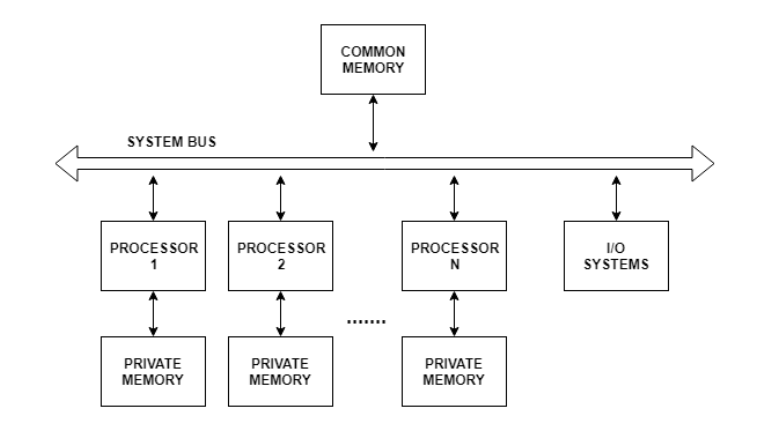
 Data Structure
Data Structure Networking
Networking RDBMS
RDBMS Operating System
Operating System Java
Java MS Excel
MS Excel iOS
iOS HTML
HTML CSS
CSS Android
Android Python
Python C Programming
C Programming C++
C++ C#
C# MongoDB
MongoDB MySQL
MySQL Javascript
Javascript PHP
PHP
- Selected Reading
- UPSC IAS Exams Notes
- Developer's Best Practices
- Questions and Answers
- Effective Resume Writing
- HR Interview Questions
- Computer Glossary
- Who is Who
Asymmetric Multiprocessing
Asymmetric multiprocessor systems are a part of multiprocessor systems along with symmetric multiprocessor systems. Multiprocessor systems have multiple processors working in parallel that share the computer clock, memory, bus, peripheral devices etc.
Features of Asymmetric Multiprocessing
Some of the key points about asymmetric multiprocessing are explained with the help of the following diagram −
Here are the points −
- All the processors are not treated equally in asymmetric multiprogramming. For example, a processor may handle only I/O related operations and another may handle only operating system code. This is in direct contrast to symmetric multiprocessing systems because there all processors are treated equally and may perform any required operation.
- The processors in asymmetric multiprocessing may have a master slave relationship i.e. a processor may assign processes to other processors.
- Asymmetric multiprocessing systems were the only options available before symmetric multiprocessing systems evolved. Even currently, they are a cheaper option as compared to symmetric multiprocessing systems.
Symmetric Multiprocessing vs Asymmetric Multiprocessing
Some differences between symmetric multiprocessing and asymmetric multiprocessing are illustrated as follows −
- In symmetric multiprocessing, all processors are equal. So they can execute any type of processes as required. In asymmetric multiprocessing, the processors are inherently unequal. There may be a master slave relationship where the master processor may assign processes to other processors.
- The processors take processes from ready queue as required in symmetric multiprocessing. There may even be separate ready queues for all the processors. In contrast, processes are assigned to processors according to specific guidelines in asymmetric processing.
- If a processor fails in symmetric multiprocessing, its tasks are divided among the other processors and efficiency of system reduces.
- However, this is more complicated in asymmetric computing. If a master processor fails than a slave processor is designated as master and if a slave processor fails, its tasks are divided among the other slaves.
- All the processors in symmetric multiprocessing share similar architecture while the architecture may be different for each processor in asymmetric multiprocessing.
- Asymmetric multiprocessing system is much easier to design and handle than symmetric multiprocessing system. This is one of the reasons it is comparatively cheaper.

Advertisements

